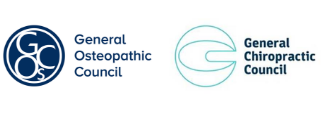How touch is communicated in the context of manual therapy: New literature review published
26 March 2019
The General Osteopathic Council (GOsC) and the General Chiropractic Council (GCC) have published: How is touch communicated in the context of manual therapy? A literature review by Dr Michael Concannon and Samuel Lidgley from the University of Huddersfield.
The literature review was commissioned because, although patients report very high levels of satisfaction in osteopathic and chiropractic care, concerns reported by patients in the area of consent and communication, and in the areas of boundary transgressions are higher than desirable – although numbers of concerns are reducing.
Both the GOsC and the GCC are exploring how to support patients and practitioners in this critical area and the literature review was commissioned as part of a suite of work to further reduce concerns in this area.
Key findings of the literature review included:
- Touch is multi-faceted and a complex phenomenon to research without clear language to communicate understanding.
- There are positive aspects of touch and relationship to wellbeing, as well as negative implications of miscommunication and breaches of boundaries for patients.
- There is a need for further research about touch in the context of osteopathic and chiropractic care.
- Further consideration is needed as to how regulators and others in the sector might support patients and practitioners in this critical area.
An executive summary is available.
The findings of the report will be discussed with patients, osteopathic and chiropractic stakeholders at two workshops facilitated by Dr Michael Concannon firstly on 26 March 2019 in Huddersfield and then in London on 27 March 2019.
The feedback from these key interested parties will help us all to consider further how to support patients and practitioners to maintain and enhance the positive aspects of touch and reduce areas of miscommunication and harm.
Read the executive summary of the literature review.
Read the full literature review.



